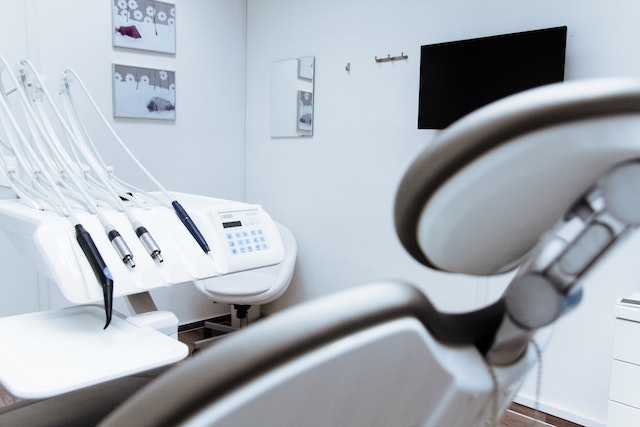Welcome to the era of technological advancement, where the need to streamline and enhance the efficacy of Healthcare Facilities is more vital than ever. Over the years, technology has significantly reshaped the healthcare landscape, introducing numerous innovative tools that have transformed patient care, data management, and overall operational efficiency.
As the years have passed, the importance of patient care has only grown. Doctors, medical teams, nurses, etc., must be on the ball with monitoring and supporting patients to help them get on the right track. Ignoring signs and symptoms and dismissing people can cause further issues and the potential for legal repercussions, so individuals and facilities must ensure total support, which is why technology is so important as it keeps this all running.
When patients are (hopefully) diagnosed, they will be labeled with a medical code to help provide proper billing as well as effective patient management. For example, they may be given the ICD-10 M54.2 code, (if you are questioning about – “what is m54.2 diagnosis code?” The Intake can provide that information to you), so they can be tracked and supported to establish that the right experts are seeing them and that compliance is guaranteed. Tracking them is harder through manual avenues, but with technology at the helm, it is easier to see where a patient is at and what the next steps will be.
As we delve into this exciting realm of healthcare technology, we’re about to unfold how integrating these tools can make a world of difference to your healthcare facilities.
Take a look at this list as we discuss the essential technological tools at the forefront of efficient healthcare facilities.
1. Hospital Barcode Scanners:
Our first step into the technological revolution begins with a tool that has profoundly improved the efficiency of healthcare facilities: Hospital Barcode Scanners. Patient data accuracy is paramount in healthcare facilities, and the room for error is nonexistent.
However managing patients’ records, medication, and tracking equipment can be a complex process. Here’s where hospital barcode scanners come to the rescue.
These tools are designed to help healthcare providers scan and track vital information with impeccable accuracy and speed. Barcode scanners, in particular, have become a preferred choice among healthcare facilities.
Known for their durable design, high scanning speed, and versatility in reading various types of barcodes, these scanners have substantially improved data management in healthcare.
Healthcare facilities can utilize hospital barcode scanners by Code to reduce errors, save valuable time, and ensure efficient workflow. Thus, contributing to better patient care and establishing a more organized, productive healthcare environment.
2. Electronic Health Records (EHRs):
EHRs are a digital version of a patient’s paper chart, encompassing their complete health history. By centralizing this information, EHRs ensure easy access, reduce data redundancy, and minimize errors that can occur with manual record-keeping.
Furthermore, EHRs can significantly enhance treatment plans and diagnoses by providing healthcare providers with an extensive, real-time view of patient health data. This functionality extends to test results, medical histories, treatments, and even notes from various healthcare providers.
An interesting NCBI study showed that EHRs could assist in predictive analytics for better patient outcomes. Indeed, in our tech-driven world, EHRs are instrumental in creating a streamlined, patient-centric healthcare facility.
3. Telemedicine Technologies:
The advent of telemedicine technologies has undoubtedly revolutionized the healthcare landscape, making medical consultations and treatment plans accessible beyond the confines of a traditional doctor’s office.
Telemedicine allows healthcare providers to connect with patients remotely, leading to numerous benefits such as increased accessibility, reduced travel times, and even lower healthcare costs.
As virtual visits become the new norm, patients can receive care in the comfort of their own homes, thereby increasing their satisfaction and compliance. Moreover, healthcare facilities can extend their services to rural areas and individuals with mobility limitations, thus providing a more inclusive healthcare environment.
4. Wearable Health Technology:
These devices have steadily transformed how we monitor and manage health, paving the way for a proactive approach toward wellness. From smartwatches tracking our heart rate and step count to specialized devices monitoring chronic conditions like diabetes, wearable technology has become a constant health companion.
Wearable technology’s ability to track health in real time sets it apart. This continuous monitoring can alert individuals to potential health concerns before they escalate into serious issues, promoting early detection and intervention.
In addition, the ability to share this data with healthcare providers can also enhance the accuracy of diagnoses. Wearable technology is truly a game-changer in healthcare, setting the stage for personalized care.
5. Virtual Reality (VR) for Patient Therapy:
The realm of virtual reality (VR) isn’t limited to gaming or entertainment anymore; it’s carving out a significant space in the healthcare sector. VR has emerged as a powerful tool for patient therapy and rehabilitation, breaking the barriers of traditional therapeutic methods.
From helping stroke patients regain motor functions to assisting in chronic pain management, VR is proving its worth. It allows patients to engage in interactive, immersive environments that stimulate recovery and reduce anxiety or pain perception.
6. Cloud Services for Data Management:
As healthcare facilities generate vast amounts of data, managing it securely and efficiently becomes paramount. Cloud services emerge as a robust solution, allowing hospitals to store, retrieve, and analyze data without needing significant physical storage or complex in-house systems.
Cloud services help streamline data management and promote collaboration among healthcare providers, allowing for more comprehensive and coordinated patient care.
By facilitating easy access to medical records, test results, and treatment plans, cloud services enable healthcare providers to make informed decisions swiftly, improving overall patient outcomes.
7. Remote Patient Monitoring (RPM) Systems:
Remote Patient Monitoring (RPM) systems stand out as a transformative innovation. This technology employs digital tools to collect health data from patients in one location, securely transmitting it to healthcare providers in different places for assessment and feedback. RPM systems have emerged as a boon for chronic disease management, elderly care, and post-operative monitoring.
RPM systems offer many advantages in reducing the need for frequent hospital visits, including real-time health monitoring, early detection of potential health complications, and proactive medical interventions.
They make healthcare more accessible and effective, particularly for patients living in remote areas, those with mobility challenges, or individuals requiring long-term care.
8. Predictive Analytics in Healthcare:
Predictive analytics harnesses the power of data to analyze patterns in historical and real-time health information, forecasting potential future outcomes with a level of accuracy hitherto unseen.
This ability to anticipate future events has diverse applications in healthcare. It helps healthcare providers preempt patient needs, optimize resource allocation, improve patient outcomes, and even predict and manage disease outbreaks by identifying high-risk patient groups.
Final Words:
Navigating the healthcare landscape can be complex, but as we’ve explored, these eight essential technological tools can be your compass toward better healthcare management. From enhancing patient care with hospital barcode scanners to efficient data handling through cloud services, the right technology can revolutionize your facility.
As we continue to advance into the future, embracing these tools can help create a healthcare environment that is efficient, accessible, and truly patient-centered.









